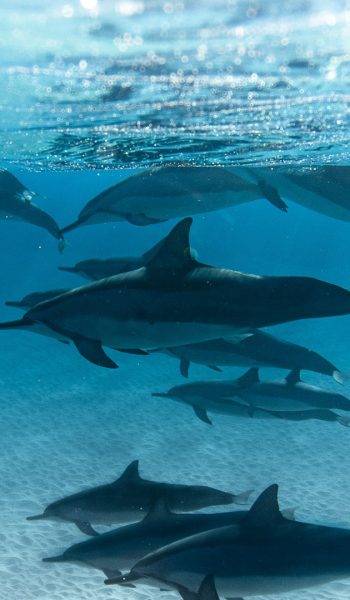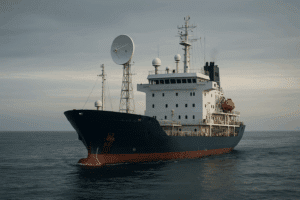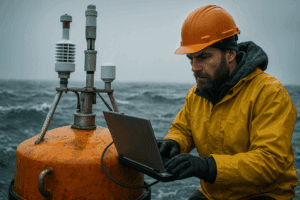The commercial fishing sector is a crucial component of the maritime industry due to the vital role that seafood plays in nourishing the world’s expanding population. In 2019, the global seafood market was valued at over 159 billion dollars, and it is projected to generate profits of up to 194 billion dollars by 2027. The fishing industry encompasses diverse stakeholders with distinct interests and roles.
Who are the key stakeholders in the fishing industry?
Fishing is one of the major sources of food production globally. The fishing industry comprises any company that catches, cultivates, processes, preserves, stores, transports, markets, or sells fish or fish products. Marine and freshwater species of fish, shellfish, mammals, and seaweed are processed into food for human consumption, animal feeds (fish oil and fishmeal for fish…), fertilizers, and ingredients for use in other commercial commodities.
Currently, the fishing industry provides employment to more than 5 million people worldwide, contributing significantly to the global economy.
Despite the negative effects of commercial fishing on wild fish populations, the global market for fish is rapidly shifting toward aquaculture. As of 2019, the value of fish farming has surpassed $285 million, and it now represents the primary source of the fish global supply chain.
The global fishing industry involves many countries, but some of the largest players are:
- China, Japan, India, South Korea, Thailand (Asia)
- United States, Canada (North America)
- Chile, Peru (Latin America)
- Spain and northern nations (Europe)
- Few countries in the western central pacific
These countries have long-standing traditions of marine fishing and have developed sophisticated methods and technologies for harvesting fish from oceans, lakes, and rivers.

These include:
- The fishermen and fishing companies catch and process fish and other seafood products for consumption.
- The seafood processors transform raw seafood into various products that are sold in retail stores and restaurants. They play an important role in the value chain of the fishing industry.
- The retailers and distributors sell seafood products to consumers. They work with seafood processors and fishermen to bring products to market and meet consumer demand.
- The coastal communities rely on fishing as a source of income and livelihood. They may be affected by changes in fishing regulations, market trends, and environmental factors.
- The consumers purchase and consume seafood products. They play a critical role in the fishing industry by creating global demand for seafood and influencing market trends.
- The representative organizations of fisheries stakeholders represent the interests of fishermen and other stakeholders in the fishing industry.
- Environmental groups advocate for the protection of marine environments and the conservation of fish populations. They promote sustainable fishing practices and push for stronger regulations to protect marine ecosystems. Some are fishermen-led, others are a coalition of commercial and recreational fishing associations, aquaria, transnational corporations, regional and national conservation groups, and marine/fisheries science organizations. Here are some internationally renowned of these civil society organizations:
- World Wildlife Fund (WWF)
- Marine Stewardship Council (MSC) rewards fisheries that meet the requirements for sustainable fishing by delivering a blue label.
- Marine Conservation Alliance
- International Seafood Sustainability Foundation
- Northwest Atlantic Marine Alliance
- Marine Fish Conservation Network
- The governmental regulatory bodies and fisheries management agencies oversee and enforce fishing regulations to ensure the sustainability of fish populations and the health of marine ecosystems.
Who regulates the fishing industry?

The United Nations Food and Agriculture Organization (FAO) is the main global regulatory body for the fishing industry, operating through its Fisheries and Aquaculture Department.
Functions of the FAO (specialized agency of the UN)
- It fosters international collaboration on matters pertaining to food security and sustainable agriculture, including the governance of fisheries (both global fisheries and small-scale fisheries), and aquaculture.
- Collaborating with member nations, it strives to establish international agreements and recommendations in order to encourage sustainable fishing practices and contribute to safeguarding the long-term health of the world’s fish populations. Among the most crucial accords put in place by the FAO is the Code of Conduct for Responsible Fisheries, which contains guidelines regarding general work practices, conservation, and management of fishery resources.
- Additionally, the FAO partners with regional fisheries management organizations to design and enforce sustainable fishing policies and regulations tailored to the regional specificities, as well as to avoid unreported or unregulated fishing.
- Furthermore, the FAO is responsible for regularly issuing reports that analyze the current status of global fisheries and aquaculture. The data provided are essential for policymakers, scientists, and other major players in the fishing industry.
Fishing regulations differ across nations, however, governmental agencies typically oversee the fishing industry to ensure: compliance with regulations, proper management and conservation of fish populations, and fishing regulation enforcement.
Regulating fishing
For instance, in the United States, the National Oceanic and Atmospheric Administration (NOAA) is responsible for regulating commercial and recreational fishing in U.S. federal waters. However, fishing in state waters is managed by local authorities. In contrast, the Common Fisheries Policy (CFP) of the European Union sets fisheries and aquaculture management policies for all the EU member states.
Regulators use a wide range of measures to manage and monitor fish populations, and promote sustainable fishing practices:
- Fishing quotas: Governments may restrict the amount of fish that can be caught in order to prevent overfishing. This is the case for albacore, big-eye, yellowfin, skipjack, and other tuna-like species.
- Size limits: Some regulations may stipulate a minimum or maximum size of fish that can be caught. This is to allow small-scale fish growth and reproduction and ensure their long-term viability.
- Gear restrictions: Governments may limit the use of certain fishing gear types to reduce by-catch (meaning the accidental capture of non-target species, especially small pelagic species) and preserve marine biodiversity and the health of the ecosystem.
- Fishing seasons and areas: Governments may limit fishing to certain periods of the year or specific areas, so that fish populations can recover. This helps to maintain fish stocks and protect other marine species.
- Licensing and permits: Fishermen may need to get licenses or fishing permits, which obtention is subject to quotas or other limitations. This regulates the number of fishermen and ensures the sustainability of fish stocks.
Enforcement: Governments may enforce fishing regulations to prevent illegal practices. To do so, they use a variety of tools, such as on-board observers and satellite monitoring of fishing activities, and fines or other penalties for non-compliance.

What is the role of the IMO in the fishing industry regulation?
The International Maritime Organization (IMO) is a United Nations specialized agency dedicated to ensuring the safety, security, and efficiency of shipping while also preventing marine pollution. Although the primary objective of the organization is to regulate the shipping industry and promote the blue economy, it also plays a significant role in enhancing fishing vessel safety, thus establishing a connection between the two sectors.
To ensure the safety of fishing vessels, the IMO has formulated a series of global agreements and guidelines that impose safety standards on these vessels and mandate adherence to specific safety measures. One such example is the International Convention for the Safety of Life at Sea (SOLAS), which sets out safety regulations for fishing vessels, including requirements regarding equipment for communication, life-saving, and fire safety.
Furthermore, the IMO has created the Cape Town Agreement, which seeks to enhance the safety of fishing vessels by laying down the minimum safety standards and requirements for inspections, surveys, and certification. The aim is to enforce the provisions of the Torremolinos Protocol pertaining to the safety of fishing vessels, thereby enhancing the safety of fishermen and reducing accidents at sea.
The relationship between fishing and the IMO is critical because the fishing activity involves high risks, and fishing vessels often operate in remote and challenging environments. By regulating the safety of fishing vessels, the IMO is contributing to the betterment of the safety and welfare of fishermen while also preventing accidents and other safety incidents at sea. This link is crucial as it underscores the need for increased attention to fishing vessel safety to promote the well-being of fishermen and prevent potential hazards.
Conclusion about the fishing industry
The growth of aquaculture presents a promising opportunity to meet the growing demand for fish while also safeguarding wild fish populations. However, the last official figures still highlight the increasing recognition of the need for sustainable and responsible fishing practices so as to minimize the whole sector’s environmental impacts and contribute to the development of the blue economy.
In this regard, the keystone actors involved in the fishing industry are working together to guarantee the long-term sustainability of fish populations, safeguard the entire marine ecosystem and marine life, and support the economic viability of the sector. This collaborative effort is essential to strike a balance between meeting the present needs of society and preserving the natural resources of our planet for future generations.
Your environmental monitoring at your fingertips!
Optimize your environmental monitoring, become smarter and more sustainable with a unified system that gathers all your environmental sensors & data in one place.

Frequently Asked Questions About the Fishing Industry
The fishing industry encompasses any company that catches, cultivates, processes, preserves, stores, transports, markets, or sells fish or fish products. This includes marine and freshwater species of fish, shellfish, mammals, and seaweed that are processed into food for human consumption, animal feeds, fertilizers, and ingredients for use in other commercial commodities.
In 2019, the global seafood market was valued at over 159 billion dollars. In 2022, it was over 257 billion dollars and it is projected to generate profits of up to 350 billion dollars by 2027.
The fishing industry has many keystone actors, each with its own roles and responsibilities. These include fishermen and fishing companies, seafood processors, retailers and distributors, coastal communities, consumers, representative organizations of fisheries stakeholders, environmental groups, governmental regulatory bodies, and fisheries management agencies.
The global fishing industry involves many countries, but some of the largest players are China, Japan, India, South Korea, Thailand (Asia), the United States, Canada (North America), Chile, Peru (Latin America), Spain, and northern nations (Europe).
Coastal communities rely on fishing as a source of income and livelihood. They may be affected by changes in fishing regulations, market trends, and environmental factors.
Consumers purchase and consume seafood products. They play a critical role in the fishing industry by creating global demand for seafood and influencing market trends.
Environmental groups advocate for the protection of marine environments and the conservation of fish populations. They promote sustainable fishing practices and push for stronger regulations to protect marine ecosystems.
Governmental regulatory bodies and fisheries management agencies oversee and enforce fishing regulations to ensure the sustainability of fish populations and the health of marine ecosystems.


